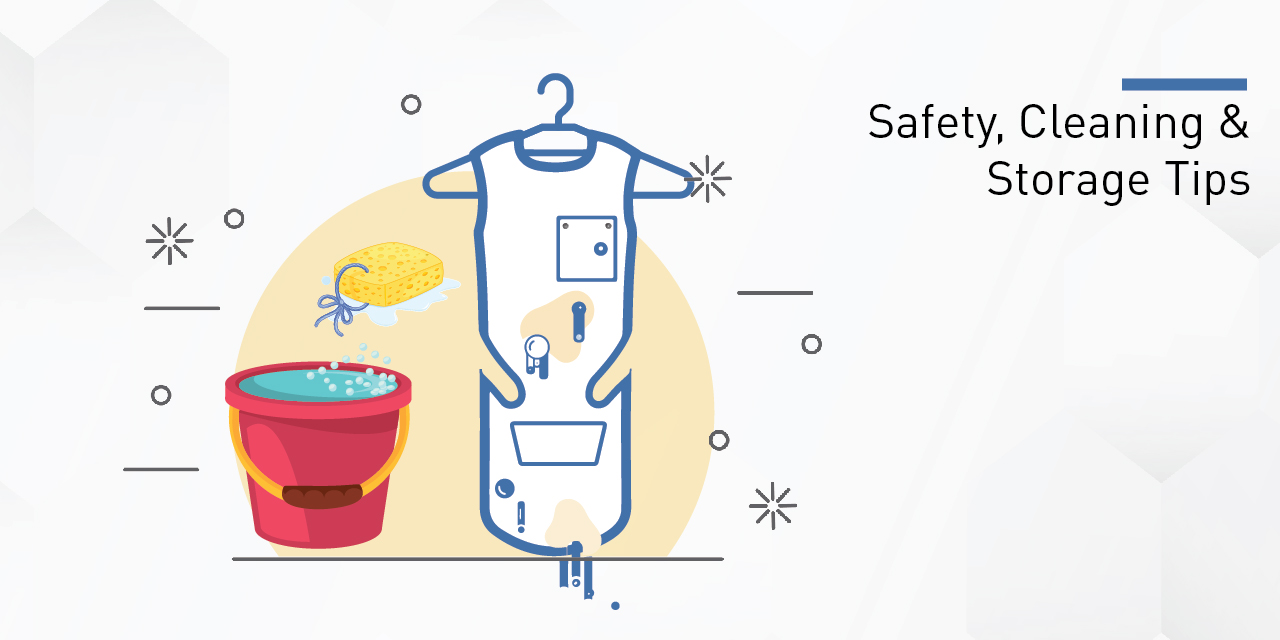Safety Cleaning & Storage Tips
Effective radiation protection equipment including lead or X-ray shielding aprons, protective gloves, and safety glasses is necessary to protect and shield the staff from the harmful effects of radiation coming from radiology equipment. These protective gears are designed to protect the radiosensitive areas of the body of the medical personnel who is repeatedly exposed to radiation. Thus, it is crucial to take proper care of them and maintain their integrity so that they can be used for long with optimized safeguard ability and also to ensure good health of the user.
There are four main aspects of proper care of radiation protection aprons and accessories which you must carefully follow to ensure you are properly protected. These include cleaning, storage and handling, annual checks, and appointing a designated radiation protection officer. Read on to learn how to properly care for your radiation protection garments and accessories.
Cleaning:
While working in a medical setting, it is obvious that your protection apparel will get dirty with chemicals, body fluids, blood, or any other thing. Hence, after their use, they must be soon wiped down carefully with cold water and a mild cleanser or spray or wipe that is non-alcoholic, non-abrasive, and bleach-free. If there is heavy soiling, cleaning must be done with a soft brush instead of immersing it fully in water. After cleaning, they must be completely dried. This practice must be done every time you take off the radiation protective garments even between the procedures. Bleaches or any chemical detergent must be avoided or else you can alter the protection level of the aprons or gloves. In addition, the radiation protection apron, lead thyroid shield, or lead gloves must not be autoclaved, machine-laundered, or dry cleaned.
For radiation safety glasses with standard or anti-reflective coating lenses, they must be regularly rinsed with warm water to get rid of debris, grease, dirt, or dust and avoid getting scratched. A mild soap solution can be used to clean the lenses before rinsing and drying by wiping them with a soft cloth. If the glasses have fog-free lenses, cleaning must be done with a microfiber cloth dipped in a 4:1 combination of alcohol in water and then dried by wiping with another microfiber cloth.
Storage and Handling:
The lead aprons must not be creased, folded, draped, or tightly pressed or stretched while sitting as the integrity of the protective material may be affected. Hence, it is strongly recommended that after the use of lead aprons, they must be hung on a hanger on a lead apron rack or equivalent storage unit or stored flat when not possible to be hung. If the aprons are to be transported from one facility to another, they must be loosely rolled but not for an extended time as this way the usable life of the apron might be reduced. Furthermore, while storing or handling them, care must be taken to avoid tearing or snagging of the fabric by looping and hooking its closure. This practice can help you prolong the lifespan of your apron.
In the case of radiation safety glasses, when they are not in use, they must be stored in a dedicated unit (or a dispenser) face up so that they do not get scratched and remain protected from airborne contaminants.
Inspection:
The aprons must go through different types of inspection: visual, manual, and radiographic (X-ray or fluoroscopic) at least once a year to uphold their standard performance. They must be checked inside-out for any breakage or damage including defects, creases, cracks, and perforations.
Disposal:
Lead aprons or gloves must be disposed of as hazardous waste.
Healthy practises plays a major role in preventing the risk of infection spread from aprons and help increase the shelf life of the aprons and accessories.

